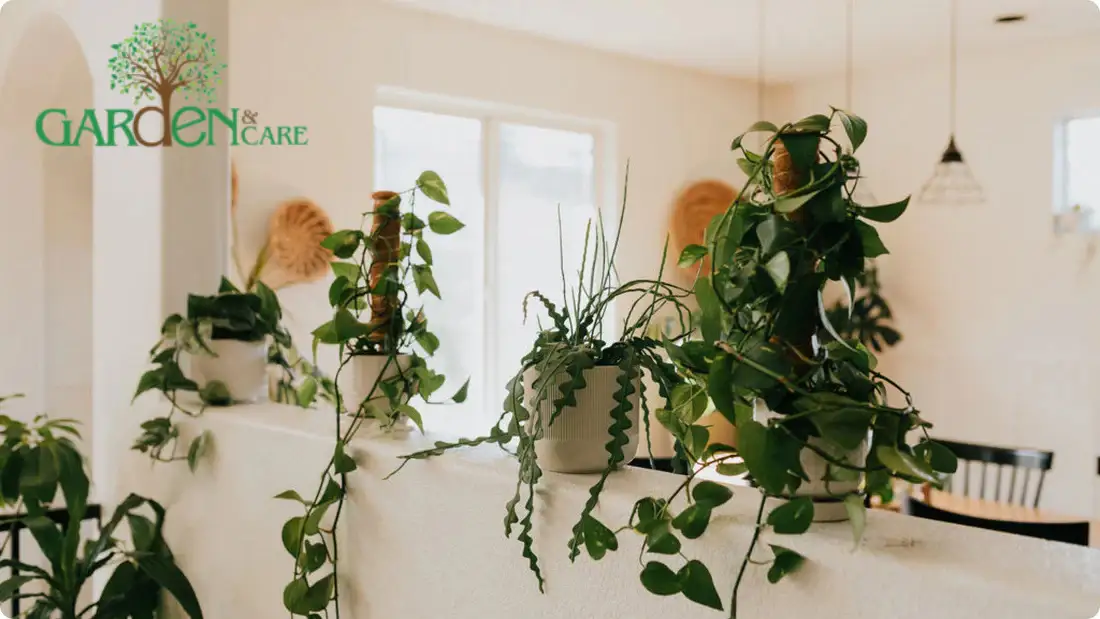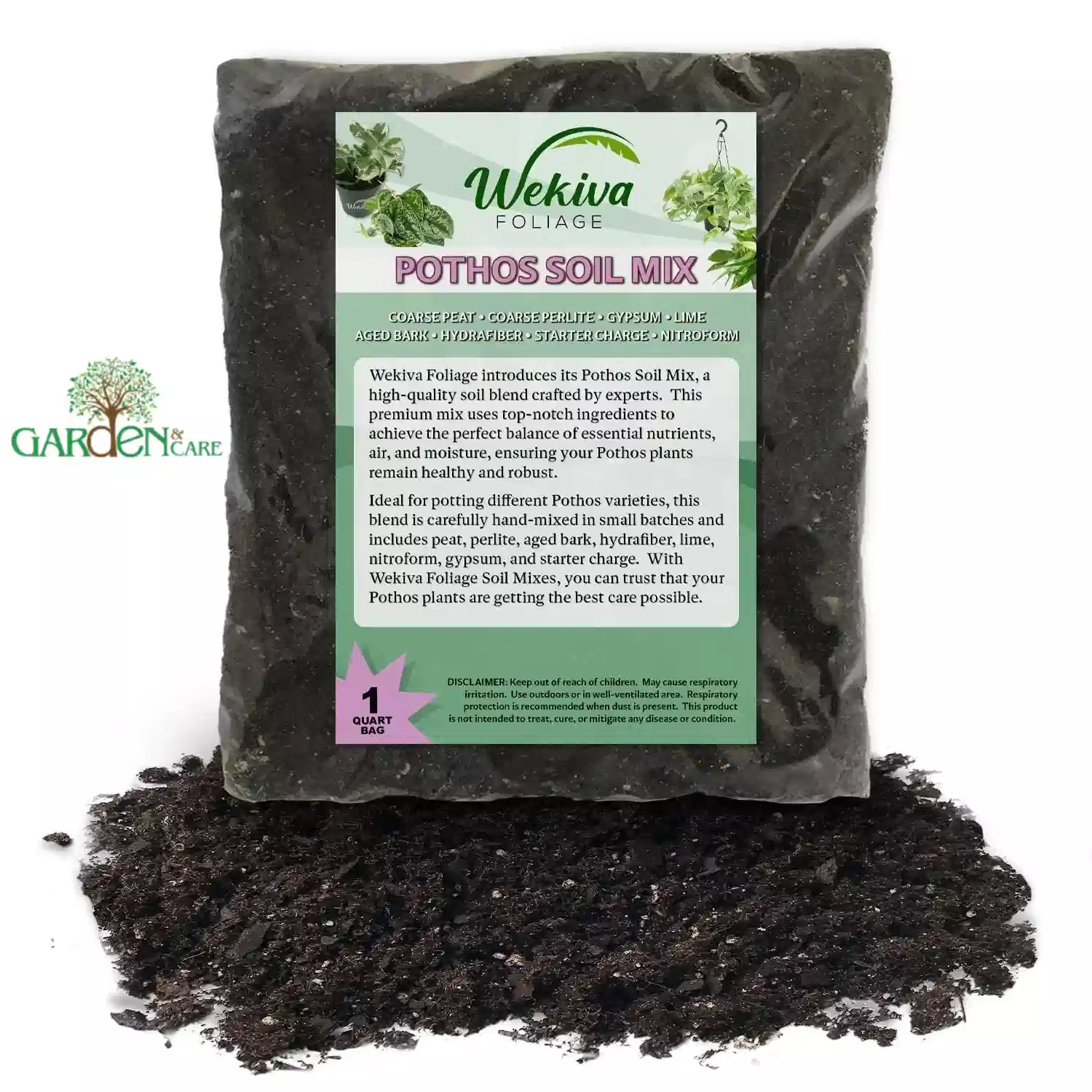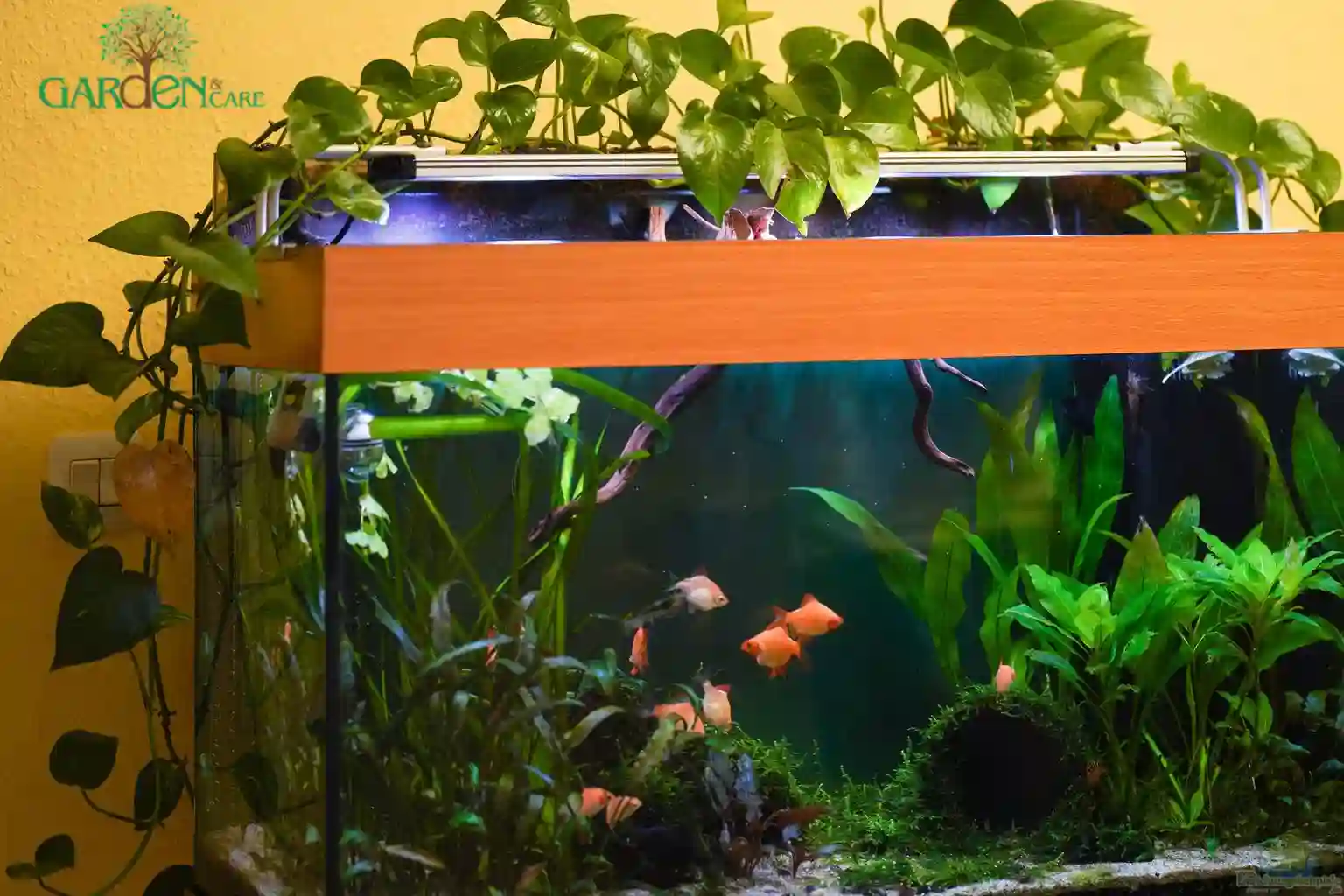Have you ever wondered how to turn your trailing pothos into a breathtaking vertical showpiece? Training your pothos on a pole doesn’t just look amazing it helps your plant grow bigger, healthier leaves and develop stronger, more mature vines. By giving your pothos the right support, you’re mimicking how it climbs trees in the wild, encouraging lush, dramatic foliage that will transform any room into a green oasis. In this guide, you’ll discover the best poles for pothos, essential care tips, and creative styling ideas to help your plant reach new heights literally!
🌱 Why Train Pothos on a Pole?
Training your pothos on a pole isn’t just about looks it’s the secret to unlocking your plant’s full potential. When you give your pothos climbing support, it can grow bigger, more mature leaves that look just like the lush vines you see in the wild. The plant’s aerial roots anchor into the pole, helping it climb and strengthen its vines.
This vertical support encourages healthier growth, reduces legginess, and makes it easier for your pothos to absorb light evenly. By learning how to make pothos climb and supporting pothos growth, you’re giving your plant the chance to thrive and create a stunning, upright statement piece. Remember: growing pothos upwards doesn’t just add style to your space it also helps your plant live a longer, happier life!
🪴 Choosing the Best Pole for Pothos
🌿 Moss Pole vs. Coir Pole: Which Is Better for Pothos?
When it comes to training your pothos, the most popular options are a moss pole for pothos or a coir pole for pothos plants. Both give your plant’s aerial roots something to grip, but each has pros and cons:
✅ Moss Pole:
- Holds moisture well, encouraging roots to attach faster.
- Great for creating big, lush leaves.
- Needs regular misting to keep moss moist.
❌ Moss Pole Cons:
- Can dry out quickly in low humidity homes.
- Moss can break down over time.
✅ Coir Pole:
- Made of coconut fiber, which is more durable.
- Holds moisture but dries a bit slower than moss.
- Looks tidier and lasts longer.
❌ Coir Pole Cons:
- Roots may attach more slowly compared to moss.
- Can be harder to find in some stores.
Choose based on your home’s humidity, your maintenance routine, and your aesthetic preference!
🛠️ DIY Moss Pole for Pothos: How to Make Your Own
Making a DIY moss pole for pothos is easy and budget-friendly. Follow these steps:
1️⃣ Gather supplies: sphagnum moss, PVC pipe or wooden stake, string or zip ties, and optional netting.
2️⃣ Soak moss until damp, then wrap it around your pole or stake.
3️⃣ Secure moss tightly with string or netting.
4️⃣ Insert the pole into your pothos pot and gently tie the vines to it.
5️⃣ Mist the moss regularly to encourage roots to grow into it.
Using pothos staking methods like a DIY pole not only saves money but lets you customize the size and shape for your plant’s needs.
🌳 Alternative Supports for Pothos
Don’t want to use a pole? Here are other creative ways to support your pothos:
✔️ Bamboo stakes: Easy to find and perfect for smaller pots.
✔️ Trellises: Create a vertical garden look indoors.
✔️ Wooden planks: Give a rustic, natural vibe great for minimalist décor.
✔️ Decorative plant poles: Choose artistic supports that double as home décor.
Any of these decorative plant poles or supports can help your pothos grow upwards beautifully while matching your style.
🌱 How to Attach and Train Pothos Vines on a Pole
🌿 Preparing Your Cuttings or Plant for Climbing
Before you start training your pothos, it’s important to pick the right vines. Look for healthy, well-established vines with strong stems and at least a few nodes. If you’re using cuttings, choose established cuttings with visible aerial roots or root bumps these will attach faster and encourage stronger, quicker growth.
Tip: Top cuttings with larger leaves will usually size up faster on the pole than skinny, immature vines!
🪴 Anchoring Aerial Roots for Stronger Growth
To train your pothos successfully, you need to secure its aerial roots so they can grip the pole and start growing upwards. Here are easy methods to encourage pothos to attach:
✅ Grafting tape Soft, stretchy, and wraps neatly around nodes without damaging stems.
✅ Soft plant ties Gently hold vines against the pole while allowing flexibility.
✅ Plant clips Great for quick fixes and easy adjustments.
Using these tools helps pothos aerial roots on pole attach securely, which leads to bigger leaves and stronger vines.
📝 Step-by-Step Guide: Training Pothos Vines Upwards
Here’s a beginner-friendly guide to get your pothos climbing in no time:
1️⃣ Prepare your pole Place it firmly in the pot’s center so it doesn’t wobble.
2️⃣ Position the vines Gently wrap your pothos vines around the pole, positioning aerial roots against the moss or coir.
3️⃣ Anchor the vines Use grafting tape, soft ties, or clips to secure nodes to the pole every few inches.
4️⃣ Mist the pole regularly Keep moss or coir moist so aerial roots can grab hold.
5️⃣ Rotate your pot Make sure all sides of your plant get light to encourage even growth.
These pothos pole training tips and training pothos vines steps will help your plant grow upward beautifully and develop larger, healthier leaves.
🌿 The Best Soil and Potting Mix for Climbing Pothos
When training pothos on a pole, the right soil is essential for healthy, vigorous growth. Using an aerated aroid mix helps prevent root rot by allowing excess water to drain quickly while still retaining some moisture for the roots.
🪴 Recommended potting mix for pothos care for climbing:
- 40% chunky perlite or pumice for drainage.
- 30% orchid bark for aeration.
- 20% coco coir or peat moss to keep some moisture.
- 10% high-quality indoor potting soil or compost for nutrients.
This chunky, well-draining mix keeps roots oxygenated and reduces the risk of soggy soil, which is one of the most common causes of unhealthy pothos.
🪴 Choosing the Right Pot for Stability
When your pothos starts climbing, the pole and plant will get top-heavy so you’ll need a stable base. Choose:
✅ Wide, heavy-bottomed pots (ceramic or terracotta work great) to prevent tipping.
✅ Pots at least 6 inches in diameter to give the root system room to grow.
✅ Ensure the pot has drainage holes to avoid waterlogged soil.
Pairing the right pot with a good aerated mix sets your pothos up for success, supporting bigger leaves and faster climbing key to effective pothos care for climbing.
💧 Watering and Fertilizing Pothos on a Pole
Keeping your pothos healthy on a pole is all about balance especially when it comes to moisture and nutrients.
🌿 How to Keep the Moss Pole Moist Without Overwatering the Soil
Your moss or coir pole needs to stay damp to encourage the pothos aerial roots on pole to anchor and climb. But if you water too much, the soil can become soggy, causing root rot. Here’s how to manage it:
✅ Mist the moss pole daily or every other day to keep it moist a spray bottle works perfectly.
✅ Water the soil only when the top 1-2 inches feel dry. Stick your finger in to check before watering.
✅ Tilt your pot slightly when misting the pole so excess water doesn’t pool in the soil.
This routine keeps the moss pole humid and inviting for aerial roots, while protecting the main root ball from overwatering.
🌱 Tips for Balanced Fertilizing to Support Fast Growth
A climbing pothos needs extra nutrients for larger leaves and stronger vines:
✅ Use a balanced liquid fertilizer (like 20-20-20) diluted to half strength every 4 weeks during spring and summer.
✅ For convenience, you can add slow-release fertilizer granules into the soil during repotting.
✅ Reduce feeding in fall and winter when growth naturally slows.
Consistent, moderate fertilizing encourages healthy, lush growth without risking fertilizer burn.
☀️ Light, Humidity, and Ideal Growing Conditions
For your pothos on a pole to thrive and produce big, beautiful leaves, you need to give it the right environment indoors.
🌞 Best Indoor Spots for Climbing Pothos
✅ Place your pothos near an east- or west-facing window where it gets bright, indirect light for most of the day.
✅ Avoid harsh, direct sunlight it can scorch the leaves.
✅ Low light will stunt growth and prevent your pothos from climbing vigorously, so aim for the brightest indirect light you can provide.
Great spots include well-lit living rooms, bright kitchens, or near sheer-curtained windows.
💧 Importance of Bright, Indirect Light and Good Humidity
Bright, indirect light helps your pothos grow faster and develop larger, mature leaves. In addition, humidity levels of 50-60% are ideal for healthy aerial root growth on your moss or coir pole.
✅ Boost humidity with a humidifier, a pebble tray with water, or by grouping your pothos with other plants.
✅ Regularly misting the moss pole also increases local humidity around the aerial roots.
Creating a warm, humid environment with plenty of indirect light mimics pothos’ natural tropical habitat, encouraging lush, vigorous climbing growth.
🎨 Styling Ideas for Indoor Climbing Pothos
Once your pothos on a pole starts climbing, you’ll want to show it off! Here are some creative ways to style your indoor pothos for a stunning statement piece:
🏡 Create a Pothos Vertical Garden
✅ Arrange several potted pothos with moss poles side by side on a shelf or plant stand to make a lush pothos vertical garden perfect for filling an empty wall with greenery.
✅ Mix different pothos varieties (Golden, Marble Queen, Neon) for a vibrant, layered look.
🌿 Use Decorative Plant Poles
✅ Upgrade your display with decorative plant poles: bamboo stakes, natural wood poles, or clear acrylic poles can add an elegant touch to your indoor space.
✅ Choose poles that match your room’s décor rustic wooden poles for a boho vibe, or sleek acrylic poles for a modern look.
🪴 Showcase Pothos as a Living Sculpture
✅ Place your climbing pothos in a tall ceramic or woven basket planter and let it become the centerpiece of your room.
✅ Position it in bright corners or next to furniture to draw the eye upwards and add a natural, dynamic element to your home.
These creative styling ideas don’t just make your pothos look beautiful they help support healthy climbing and showcase your plant as a work of living art.
⚠️ Common Mistakes When Growing Pothos on a Pole (and How to Avoid Them)
Even with the best intentions, it’s easy to make mistakes that slow down your pothos on a pole growth. Here’s what to watch out for and how to fix it:
❌ Overcrowding Vines
✅ Mistake: Planting too many vines on a single pole causes overcrowding, making it harder for each vine to get enough light, nutrients, and space.
✅ Fix: Limit to 2–3 healthy vines per pole. This keeps the plant looking full without overcrowding.
❌ Letting Moss Poles Dry Out
✅ Mistake: Dry moss prevents aerial roots from attaching and slows down growth.
✅ Fix: Keep the moss pole consistently moist by misting it every few days or watering it when it feels dry. Moist moss encourages roots to grip and climb.
❌ Ignoring Vine Attachment
✅ Mistake: Letting vines dangle instead of anchoring them properly causes small leaves and weak growth.
✅ Fix: Use grafting tape, soft ties, or plant clips to secure vines to the pole. Attach nodes directly to the moist moss so aerial roots can grow into it.
Avoid these common pitfalls, and your pothos will reward you with stronger vines, bigger leaves, and faster climbing growth!
FAQs About Pothos on a Pole
✅ What’s the best pole for pothos?
The best pole for pothos is a moss pole or coir pole, as they provide a moist, textured surface for aerial roots to attach, encouraging faster growth and bigger leaves. If you want easy watering and quick root attachment, clear grow poles (like Thickly poles) are also a great choice.
✅ How do I train pothos to climb a pole?
Start by anchoring your pothos vines to the pole with grafting tape, soft ties, or plant clips. Make sure each node (the small bumps on the vine) touches the moist pole so aerial roots can grip and climb. Over time, your pothos will naturally start to climb upwards on its own.
✅ Can I use a regular stake instead of a moss pole?
Yes, you can use a bamboo stake, wooden stick, or trellis, but pothos will attach better to a moss or coir pole because they hold moisture, which helps aerial roots develop. Regular stakes can provide support but won’t encourage the same robust climbing behavior.
✅ How often should I water a pothos on a pole?
Water when the top 1–2 inches of soil feel dry, and keep the moss pole consistently moist by misting or watering it every few days. Remember: a moist pole helps aerial roots attach and grow, but the soil should still drain well to prevent root rot.
🌿 Conclusion: Let Your Pothos Reach New Heights
Ready to transform your pothos into a stunning indoor showpiece? Training your pothos on a pole isn’t just for looks it helps your plant grow bigger leaves, stronger vines, and healthier roots. By choosing the right support, preparing a well-draining soil mix, and keeping your moss pole moist, you’ll create the perfect environment for your pothos to climb, thrive, and impress.
Don’t wait give your golden pothos or any pothos variety the support they deserve and watch them reach new heights in your home!




Leave a Reply